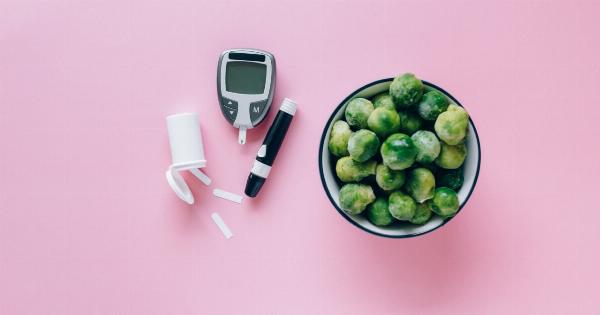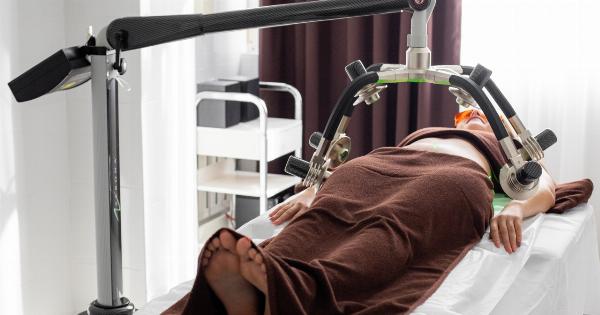Moles, also known as nevi, are common skin growths that appear as small, dark spots or raised areas on the skin.
While most moles are harmless, some individuals may choose to have them removed for cosmetic reasons or if there are concerns about the moles’ potential for developing into skin cancer. In this article, we will explore various mole removal techniques and provide helpful tips on the subject.
It is important to note that before attempting any mole removal technique, it is essential to consult with a healthcare professional or dermatologist to ensure proper diagnosis and guidance.
Types of Moles
Moles can vary in size, shape, color, and texture. Understanding the different types of moles can help determine the appropriate removal technique.
Self-Examination
Performing regular self-examinations of your skin can help identify any changes in moles and provide early detection of potential skin cancer. It is recommended to follow the ABCDE rule when examining moles:.
- Asymmetry: Normal moles are usually symmetrical in shape, meaning if a line is drawn through the middle, both halves would be equal. Asymmetrical moles can be a cause for concern.
- Border: Moles with irregular, blurred, or jagged borders may require further evaluation.
- Color: Moles should have a consistent color throughout. Moles that exhibit various shades of brown, black, red, white, or blue could be potentially dangerous.
- Diameter: Moles larger than 6 millimeters in diameter (about the size of a pencil eraser) may need examination.
- Evolving: Any mole that changes in size, shape, color, or texture should be evaluated by a healthcare professional.
Professional Mole Removal Techniques
When opting for mole removal, it is advisable to consult with a healthcare professional or dermatologist who can determine the most suitable technique based on the individual’s circumstances.
Some common professional mole removal techniques include:.
1. Excision
During an excision, the mole is surgically removed using a scalpel or a surgical punch. This technique may be recommended for larger moles or those suspected of being cancerous. It usually requires local anesthesia to ensure a painless procedure.
After removal, the area is typically sutured and may leave behind a small scar.
2. Shave Excision
Shave excision involves using a surgical blade to shave off the mole from the surface of the skin. This technique is commonly used for smaller moles that do not penetrate deep into the skin layers.
It may cause minimal scarring and typically does not require stitches.
3. Laser Removal
Laser mole removal involves the use of high-intensity laser beams to break down the pigments of the mole. This technique is commonly used for smaller, non-cancerous moles and may require multiple sessions.
It is important to note that laser removal may not be suitable for all types of moles and may cause slight discomfort during the procedure.
At-Home Mole Removal Techniques
While professional mole removal techniques are generally recommended, some individuals may seek at-home remedies for mole removal.
However, it is crucial to exercise caution and consult with a healthcare professional before attempting any at-home mole removal technique. It is essential to ensure proper diagnosis and rule out any potential risks or complications. Here are a few at-home mole removal techniques:.
1. Apple Cider Vinegar
Apple cider vinegar has been claimed to be effective for mole removal. The technique involves soaking a cotton ball in apple cider vinegar and applying it to the mole for several hours each day.
The acidity of the vinegar is believed to break down the mole gradually. However, scientific evidence supporting this method is lacking, and it may cause skin irritation or burns. It is best to consult with a healthcare professional before attempting this technique.
2. Tea Tree Oil
Tea tree oil is known for its antifungal and antibacterial properties. Some individuals claim that applying tea tree oil directly to the mole can help remove it over time.
However, limited scientific evidence exists to support this claim, and it is essential to proceed with caution, as tea tree oil may cause skin irritation in some individuals.
3. Iodine
Iodine, commonly found in antiseptic solutions, can be applied to the mole to trigger cell death and removal.
This technique should be performed under the guidance of a healthcare professional, as excessive iodine application or misuse may lead to skin irritation or damage.
Mole Removal Tips
Regardless of the mole removal technique chosen, it is important to keep the following tips in mind:.
1. Consult with a Professional
Prior to mole removal, it is crucial to consult with a healthcare professional or dermatologist who can provide an accurate diagnosis and recommend the most suitable technique based on individual circumstances.
Professional guidance helps minimize the risk of complications and ensures a safe procedure.
2. Follow Aftercare Instructions
After mole removal, it is essential to follow any aftercare instructions provided by the healthcare professional.
This may include keeping the area clean and dry, applying prescribed ointments or creams, and avoiding activities that may strain or disrupt the healing process.
3. Protect from the Sun
Exposure to the sun’s harmful UV rays can increase the risk of developing new moles or skin damage.
It is crucial to protect the treated area from the sun by applying sunscreen with a high SPF, wearing protective clothing, and seeking shade whenever possible.
4. Regular Skin Examinations
Even after mole removal, it is important to continue regular self-examinations of the skin and monitor for any new moles, changes in existing moles, or other abnormal skin lesions. Promptly report any concerns to a healthcare professional.
Conclusion
Mole removal techniques can vary depending on the size, type, and location of the mole. While professional removal techniques are generally recommended, individuals may consider at-home remedies with caution and professional guidance.
Regardless of the chosen method, it is crucial to prioritize consultation with a healthcare professional or dermatologist for proper diagnosis, guidance, and to ensure the safety and effectiveness of the procedure.






























